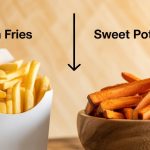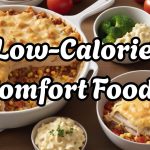Congratulations on your decision to start eating healthier and lose weight! Navigating the grocery store can be overwhelming with so many options, but don’t worry—I’m here to help. This comprehensive list is designed specifically for those who want to make healthier choices and reach their fitness goals. With this handy guide, you’ll confidently breeze through the aisles, selecting nutritious and slimming foods to fuel your body and help shed those unwanted pounds. Let’s go shopping!
If you are in a hurry you can skip to our sample list below.
Produce
When it comes to eating healthier and losing weight, one of the first things you should focus on is incorporating more fruits, vegetables, and herbs into your diet. These food groups are packed with essential vitamins, minerals, and antioxidants that can support your overall health and well-being.
Fruits
Fruits are not only delicious but also a great source of natural sweetness. Whether you prefer apples, oranges, bananas, or berries, adding a variety of fruits to your shopping list is a smart choice. Fruits are low in calories and high in fiber, making them a perfect snack or addition to your meals. Plus, they provide important nutrients like Vitamin C and potassium to keep your immune system strong.
Vegetables
Vegetables should make up a significant portion of your grocery haul, as they are low in calories and rich in essential nutrients. Consider stocking up on leafy greens like spinach and kale, as well as colorful options like bell peppers, carrots, and broccoli. These veggies are not only packed with vitamins and minerals but also provide filling fiber that can aid in weight loss. Experiment with different cooking methods, such as roasting or sautéing, to make your veggies more enjoyable.
Herbs
While herbs may often be overlooked, they can add a burst of flavor to your meals without adding excess calories or sodium. Consider including herbs like basil, cilantro, and parsley in your grocery list to enhance the taste of your dishes. Not only do herbs make your meals more delicious, but they also provide additional health benefits, such as anti-inflammatory properties and digestive support.
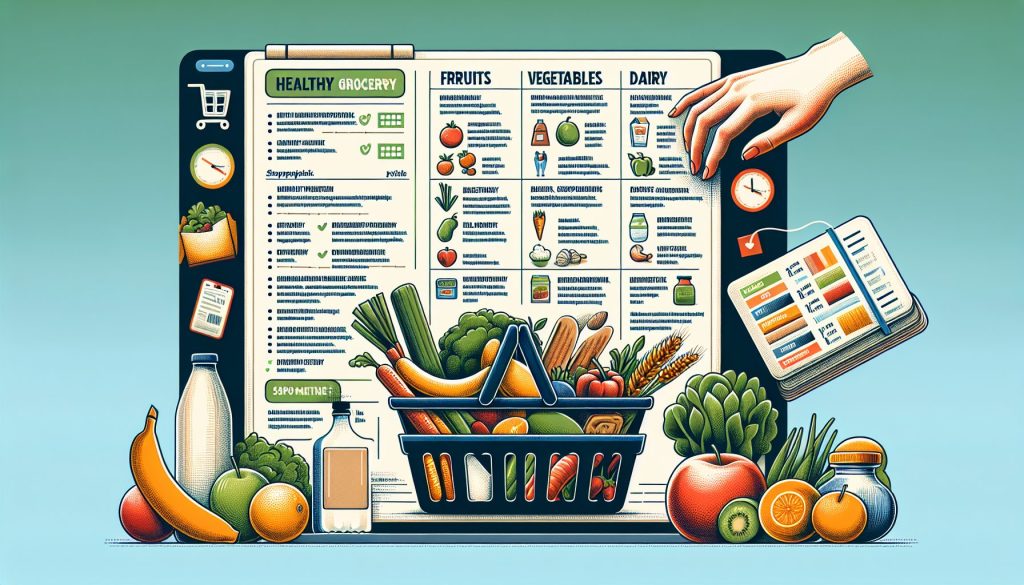
Dairy and Eggs
Dairy and eggs are excellent sources of protein and calcium, both of which are essential for maintaining strong bones and muscles. However, it’s important to choose healthier options within this food group to support your weight loss goals.
Milk and Alternatives
When it comes to milk, opt for low-fat or skim varieties to reduce your intake of saturated fats. If you prefer non-dairy alternatives, go for unsweetened almond milk or soy milk. These options are lower in calories and often fortified with essential nutrients like calcium and vitamin D.
Cheeses
While cheese can be a delicious addition to meals, it’s important to choose wisely. Opt for lower-fat options like feta, mozzarella, or cottage cheese. These varieties still provide the creamy goodness you crave but with fewer calories and saturated fats.
Yogurt
Yogurt is a versatile and nutritious option that can be enjoyed on its own or used as a base for smoothies, dressings, and dips. Look for plain, low-fat, or Greek yogurt to avoid added sugars and excessive calories. You can then flavor it with fresh fruits or a drizzle of honey for added sweetness.
Eggs
Eggs are a fantastic source of protein, making them a staple on any healthy grocery shopping list. Whether you prefer them scrambled, poached, or boiled, eggs provide essential amino acids that support muscle growth and repair. Plus, they are a budget-friendly option and can be used in a variety of dishes.
Meat and Proteins
Protein is an important macronutrient that can aid in weight loss and muscle development. When selecting meats and proteins, it’s essential to choose lean options and incorporate plant-based alternatives for a well-rounded diet.
Fish and Seafood
Fish and seafood are rich in omega-3 fatty acids, which provide numerous health benefits for your heart and brain. Include options like salmon, tuna, shrimp, and cod in your shopping list to reap the benefits of these healthy fats. Not only are they a great source of lean protein, but they also add variety and flavor to your meals.
Poultry
Chicken and turkey are excellent sources of lean protein that can easily be incorporated into your meals. Opt for skinless chicken breasts or turkey cutlets to reduce your intake of saturated fats. These versatile proteins can be grilled, roasted, or sautéed to add extra flavor to your dishes.
Lean Meat
If you enjoy red meat, choose lean cuts such as sirloin, tenderloin, or flank steak. It’s important to moderate your consumption of red meat, as it tends to be higher in saturated fats. However, lean cuts can still provide essential nutrients like iron and vitamin B12 without adding excessive calories.
Plant-Based Proteins
For those following a vegetarian or vegan lifestyle, there are plenty of plant-based protein options available. Incorporate foods like tofu, tempeh, legumes, and quinoa into your grocery list. These plant proteins not only provide essential amino acids but also offer fiber and other nutrients that support a healthy diet.
Grains and Cereals
Grains and cereals are good sources of carbohydrates, which provide energy and essential nutrients. However, it’s important to opt for whole grains and minimize processed cereals in your shopping cart.
Whole Grains
Whole grains are less processed and retain more of their natural nutrients compared to refined grains. Choose options like brown rice, quinoa, whole wheat bread, and whole grain pasta. These choices are higher in fiber and have a lower glycemic index, promoting satiety and stable blood sugar levels.
Cereals
If you enjoy having cereal for breakfast, choose whole-grain options that are low in added sugars. Look for cereals that are high in fiber and contain minimal artificial ingredients. Pair your cereal with low-fat milk or yogurt and fresh fruits for a nutritious and filling morning meal.
Breads and Wraps
When purchasing bread or wraps, opt for whole wheat or whole grain varieties. These choices provide more nutrients and fiber compared to white bread or tortillas. Use these bread products to make sandwiches or wraps loaded with lean proteins and veggies for a satisfying and balanced meal.
Pasta and Rice
If you crave pasta dishes, choose whole grain or whole wheat pasta instead of refined white pasta. These options contain more fiber and nutrients while still providing a satisfying pasta texture. Similarly, replace white rice with brown rice or quinoa to boost your intake of whole grains and increase the nutritional value of your meals.
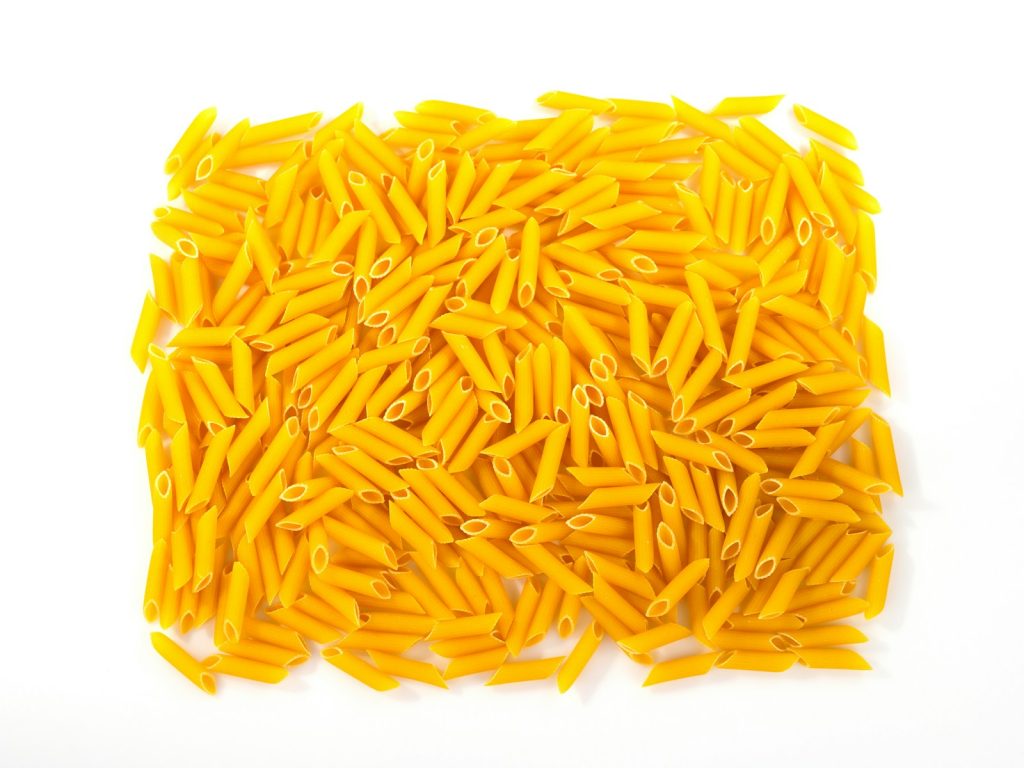
Pantry Staples
While fresh produce and proteins may take center stage in your healthy grocery shopping list, don’t forget about pantry staples. These items can add flavor and nutritional value to your dishes.
Beans and Legumes
Beans and legumes are an excellent source of plant-based protein, fiber, and essential minerals. Black beans, chickpeas, lentils, and kidney beans are all affordable and versatile options. Use them in soups, stews, salads, or as a protein substitute in your favorite recipes.
Nuts and Seeds
Nuts and seeds provide healthy fats, protein, and various essential nutrients. Almonds, walnuts, chia seeds, and flaxseeds are all nutrient-dense options to include in your shopping list. Enjoy them as a snack, sprinkle them over salads or yogurt, or incorporate them into your baking.
Oils and Vinegar
Instead of using unhealthy oils, opt for healthier options like extra virgin olive oil or avocado oil. These oils provide heart-healthy fats and can be used in cooking, dressings, and marinades. Vinegar, such as balsamic vinegar or apple cider vinegar, are also great pantry staples to add flavor and acidity to your dishes.
Herbs and Spices
Herbs and spices can transform a boring meal into a flavorful masterpiece. Stock up on staples like garlic powder, onion powder, oregano, basil, and cinnamon. These seasonings add depth and complexity to your cooking without adding unnecessary calories, making them essential in any healthy kitchen.
Frozen Foods
Frozen foods can be a convenient and cost-effective option, especially for fruits and vegetables that may not be in season. Look for minimally processed frozen options without added sugars or sauces.
Frozen Fruits and Vegetables
Frozen fruits and vegetables are just as nutritious as fresh options as they are picked at their peak and then frozen to preserve their vitamins and minerals. Always have a bag of frozen berries or mixed vegetables in your freezer for quick and easy meal additions or smoothie ingredients.
Frozen Meat and Seafood
If you plan on incorporating meats and seafood into your meals but are concerned about waste, consider purchasing frozen options. Frozen chicken breasts, salmon fillets, or shrimp can be thawed as needed, eliminating the need to use them all at once.
Frozen Meals
While it’s always best to cook from scratch, frozen meals can be a convenient option for busy days. Look for options that prioritize whole grains, lean proteins, and plenty of veggies. Be cautious of frozen meals that are high in sodium or contain excessive amounts of added sugars.
Beverages
Choosing healthier beverage options is just as important as selecting nutritious foods. Hydration is key for overall health and weight loss goals.
Water
Water should be your go-to beverage when it comes to staying hydrated. It’s calorie-free and essential for maintaining proper bodily functions. Consider flavoring your water with slices of lemon, cucumber, or fresh mint to make it more enjoyable.
Tea
Tea is a great choice for a warm or refreshing beverage option. Green tea, herbal tea, or black tea all offer different flavors and potential health benefits. Just be mindful of adding excessive amounts of sugar or sweeteners to keep it a healthy option.
Coffee
For coffee lovers, enjoying a cup of joe can be a part of a healthy diet. Choose black coffee or use a small amount of low-fat milk or milk alternative. Be cautious of adding excessive sweeteners or creamers, as they can significantly increase the calorie content of your coffee.
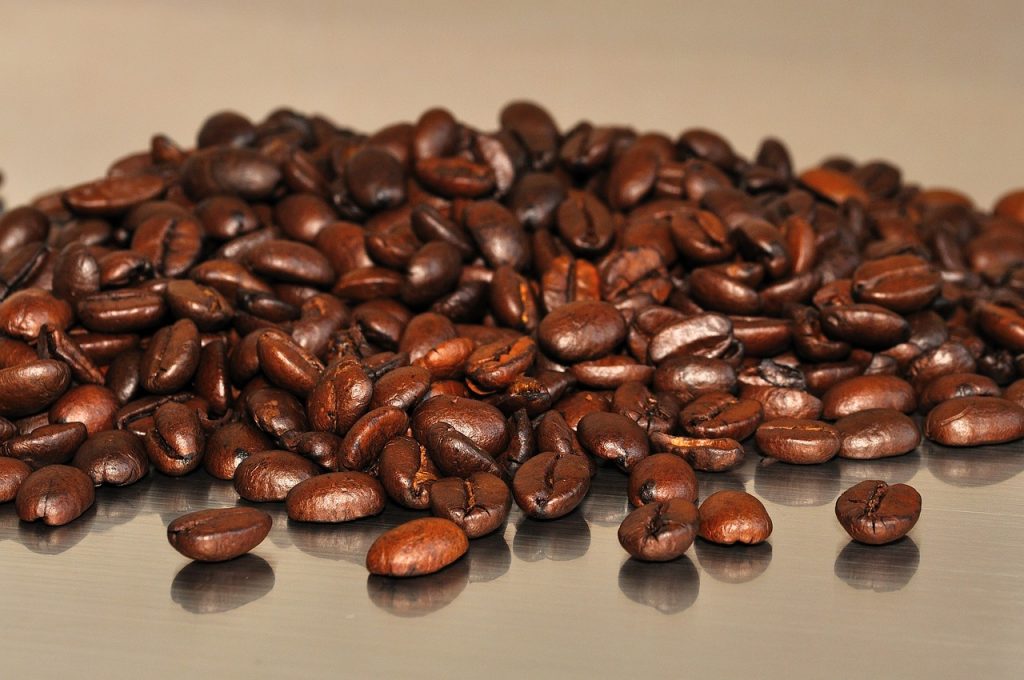
Freshly Squeezed Juices
If you enjoy juice, opt for freshly squeezed options over store-bought varieties. Freshly squeezed juices retain more of the nutrients from the fruits and vegetables. However, be mindful of portion sizes, as even natural fruit juices can be high in sugar.
Snacks
Having nutritious snacks on hand is crucial for maintaining healthy eating habits and preventing mindless snacking on unhealthy options.
Nutritious Bars
Nutritious bars, such as granola bars or protein bars, can be a great option for on-the-go snacking. Look for options that are low in added sugars and high in fiber and protein.
Trail Mix
Trail mix is a satisfying and portable snack option that combines a variety of nuts, seeds, and dried fruits. However, be mindful of portion sizes, as it can be calorie-dense. Look for options with no added sugars or unhealthy additives.
Dried Fruit
Dried fruit can provide a natural sweetness and a concentrated source of vitamins and minerals. However, it’s important to choose unsweetened options and consume them in moderation, as they can be higher in calories compared to fresh fruits.
Whole Grain Crackers
Whole-grain crackers can be a great alternative to traditional processed snack crackers. Look for options that are made with whole grains and minimal artificial ingredients. Pair them with a healthy dip, like hummus or salsa, for a satisfying snack.
Condiments and Sauces
Condiments and sauces can add flavor and enhance your meals, but many store-bought options can be high in sodium, added sugars, and unhealthy fats. Choosing healthier alternatives can make a significant difference in your overall health and weight loss journey.
Mustards and Ketchups
Choose mustards and ketchups that are low in added sugars and sodium. Look for options with natural ingredients and no artificial preservatives. These condiments can add a tangy or sweet touch to your dishes without adding excessive calories.
Soy Sauce
If you enjoy Asian cuisine, opt for reduced-sodium soy sauce or tamari. These options provide the umami flavor you crave without drastically increasing your sodium intake. Be mindful of portion sizes, as soy sauce is still relatively high in sodium even when reduced.
Salsa
Salsa is a flavorful and low-calorie option for adding zest to your meals. Look for salsas that are made with fresh ingredients and minimal added sugars. Salsa can be used as a dip, topping, or ingredient to liven up your dishes without adding excessive calories or unhealthy fats.
Salad Dressings
Store-bought salad dressings can be high in unhealthy fats and additives. Consider making your own dressings using healthy oils, vinegar, and herbs. Homemade dressings allow you to control the ingredients and customize the flavors to your liking.
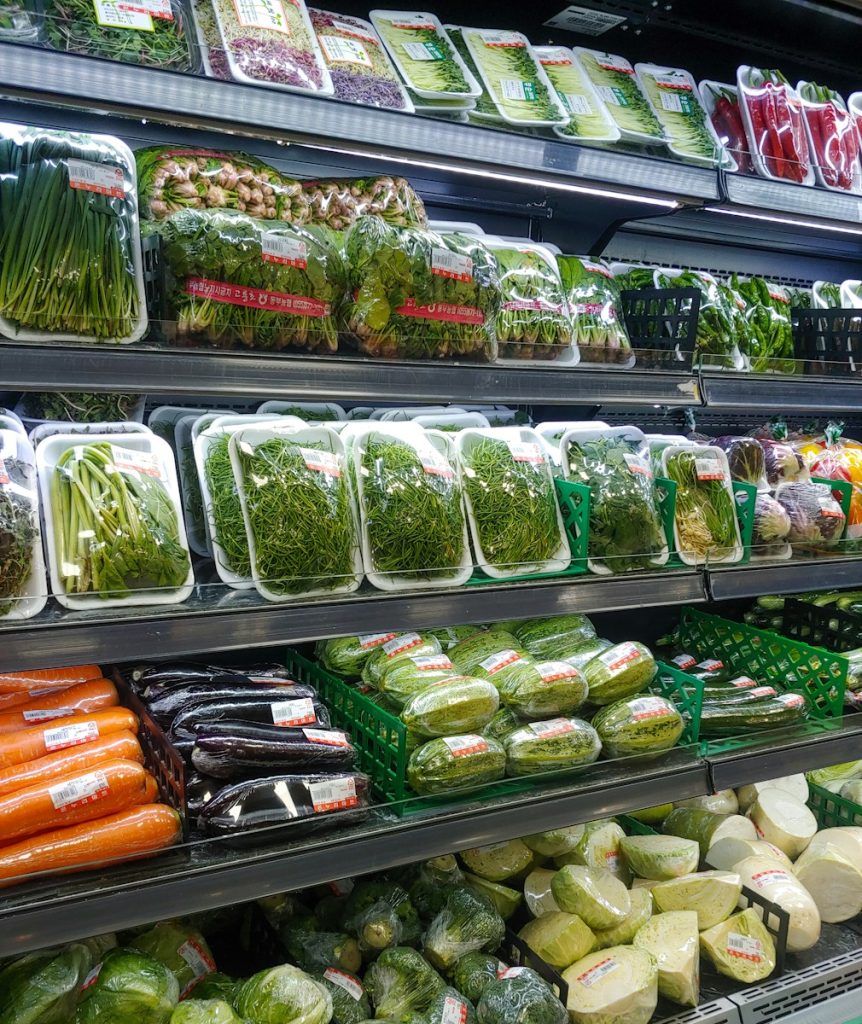
Healthy Treats
Even when trying to lose weight and eat healthier, it’s important to indulge in some treats occasionally. However, choose healthier alternatives that won’t derail your progress.
Dark Chocolate
Dark chocolate is rich in antioxidants and contains less sugar compared to milk chocolate. Enjoy a small piece of dark chocolate to satisfy your sweet tooth without going overboard on calories and added sugars. Look for options that have a higher cocoa percentage for maximum health benefits.
Protein Cookies
Protein cookies are a great option for satisfying your cravings while still getting a boost of protein. Look for options that are low in added sugars and high in protein and fiber. These cookies can be a guilt-free treat that supports your weight loss goals.
Fruit Cups
Fruit cups can be a convenient option for enjoying fruit on the go. Look for options that are packaged in their natural juices or water, without added sugars or syrups. Fresh fruit is always the best choice, but when that’s not available, fruit cups can be a suitable alternative.
Yogurt Cups
Yogurt cups can be a delicious and satisfying treat, but it’s important to choose options that are low in added sugars and artificial ingredients. Look for plain or low-sugar yogurts and pair them with fresh fruits or a drizzle of honey for added flavor.
Sample – The Ultimate Healthy Grocery Shopping List
Embarking on a journey towards healthier eating and weight loss can be both exciting and overwhelming. Navigating the grocery store aisles with so many options can sometimes be daunting. To help you make informed choices and fuel your body with nutritious foods, we have created a sample ultimate healthy grocery shopping list. This list focuses on a variety of food groups, ensuring a balanced and nutrient-rich diet.
Below is a table featuring different categories of food items that you should consider including in your grocery shopping. Each item is accompanied by its nutritional values, highlighting essential vitamins, minerals, and calorie content. This guide aims to simplify your shopping experience, making it easier to select foods that support your health and fitness goals.
From fresh produce and dairy to meats, grains, pantry staples, and snacks, this list covers everything you need for a wholesome diet. Additionally, healthier alternatives for condiments and sauces, as well as options for nutritious beverages and treats, are included to help you maintain a balanced and enjoyable eating plan.
Refer to this table whenever you plan your grocery shopping to ensure you are choosing the best options for your body and overall well-being:
| Category | Item | Nutritional Values |
|---|---|---|
| Produce | Apples | Vitamin C, fiber; 95 calories per medium apple |
| Oranges | Vitamin C, fiber; 62 calories per medium orange | |
| Bananas | Potassium, Vitamin C; 105 calories per medium banana | |
| Berries | Antioxidants, Vitamin C; 50 calories per cup | |
| Spinach | Iron, Vitamin A; 7 calories per cup | |
| Kale | Vitamin K, Vitamin C; 33 calories per cup | |
| Bell Peppers | Vitamin C, fiber; 24 calories per medium pepper | |
| Carrots | Vitamin A, fiber; 25 calories per medium carrot | |
| Broccoli | Vitamin C, Vitamin K; 55 calories per cup | |
| Basil, Cilantro, Parsley | Minimal calories, high in flavor and health benefits | |
| Dairy and Eggs | Low-fat Milk | Calcium, Vitamin D; 102 calories per cup |
| Unsweetened Almond Milk | Calcium, Vitamin E; 30 calories per cup | |
| Feta Cheese | Calcium, protein; 75 calories per ounce | |
| Mozzarella Cheese | Calcium, protein; 85 calories per ounce | |
| Cottage Cheese | Protein, calcium; 90 calories per half cup | |
| Plain Greek Yogurt | Protein, probiotics; 100 calories per cup | |
| Eggs | Protein, Vitamin B12; 70 calories per large egg | |
| Meat and Proteins | Salmon | Omega-3, protein; 206 calories per 3 oz |
| Tuna | Omega-3, protein; 99 calories per 3 oz | |
| Chicken Breast | Protein, B vitamins; 165 calories per 3 oz | |
| Turkey Cutlets | Protein, low fat; 120 calories per 3 oz | |
| Sirloin Steak | Protein, iron; 150 calories per 3 oz | |
| Tofu | Plant protein, calcium; 94 calories per 3 oz | |
| Tempeh | Plant protein, fiber; 195 calories per 3 oz | |
| Black Beans | Protein, fiber; 114 calories per half cup | |
| Quinoa | Protein, fiber; 222 calories per cup cooked | |
| Grains and Cereals | Brown Rice | Fiber, B vitamins; 216 calories per cup cooked |
| Whole Wheat Bread | Fiber, B vitamins; 69 calories per slice | |
| Whole Grain Pasta | Fiber, B vitamins; 174 calories per cup cooked | |
| High-Fiber Cereal | Fiber, vitamins; Varies, approximately 120 calories per cup | |
| Pantry Staples | Black Beans | Protein, fiber; 114 calories per half cup |
| Chickpeas | Protein, fiber; 120 calories per half cup | |
| Almonds | Healthy fats, protein; 160 calories per ounce | |
| Walnuts | Omega-3, protein; 185 calories per ounce | |
| Chia Seeds | Omega-3, fiber; 138 calories per ounce | |
| Extra Virgin Olive Oil | Healthy fats; 120 calories per tablespoon | |
| Apple Cider Vinegar | Minimal calories, flavor enhancer | |
| Frozen Foods | Frozen Berries | Vitamin C, antioxidants; 50 calories per cup |
| Frozen Mixed Vegetables | Variety of vitamins and minerals; 70 calories per cup | |
| Frozen Salmon Fillets | Omega-3, protein; 206 calories per 3 oz | |
| Beverages | Water | 0 calories |
| Green Tea | Antioxidants; 2 calories per cup | |
| Black Coffee | 2 calories per cup | |
| Freshly Squeezed Orange Juice | Vitamin C; 112 calories per cup | |
| Snacks | Granola Bars | Fiber, protein; Approximately 100-200 calories per bar |
| Trail Mix | Healthy fats, protein; Approximately 200 calories per quarter cup | |
| Unsweetened Dried Fruit | Fiber, vitamins; Varies, approximately 100-150 calories per quarter cup | |
| Whole Grain Crackers | Fiber; Approximately 120 calories per serving | |
| Condiments and Sauces | Low-Sugar Ketchup | Minimal calories, flavor enhancer; 20 calories per tablespoon |
| Reduced-Sodium Soy Sauce | Flavor enhancer; 10 calories per tablespoon | |
| Fresh Salsa | Low calories, vitamins; 20 calories per quarter cup | |
| Homemade Salad Dressing | Healthy fats, flavor; Varies, approximately 50-100 calories per tablespoon | |
| Healthy Treats | Dark Chocolate | Antioxidants; 170 calories per ounce |
| Protein Cookies | Protein, fiber; Approximately 200 calories per cookie | |
| Fruit Cups in Natural Juice | Vitamins, fiber; Approximately 60 calories per cup | |
| Low-Sugar Yogurt Cups | Protein, probiotics; Approximately 100 calories per cup |
By incorporating these different food groups and making healthier choices within each category, you can create the ultimate healthy grocery shopping list. Whether you’re looking to lose weight or simply improve your overall health, stocking your fridge and pantry with these nutritious options will set you up for success. Remember to listen to your body’s hunger and fullness cues and practice mindful eating as you nourish yourself with these wholesome foods.
© 2024 by fewercalories.com. All rights reserved. No part of this document may be reproduced or transmitted in any form or by any means, electronic, mechanical, photocopying, recording, or otherwise, without prior written permission of fewercalories.com.
